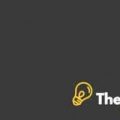
Introduction
Al Qassimi Hospital
Al Qassimi Hospital was established in 1991 and it is the largest government hospital in Sharjah.It is a tertiary referral hospital in the northern Emirates, which provides quality healthcare services to the general public. It has a capacity of 365 hospital beds in total. Al Qassimi Hospital has 800 employees, which include189 qualified doctors, 388 nurses, 171 pharmaceutical staff and 52 administrative staff and members.
HR Functions
The HRdivision at Al Qassimi Hospital has 18 employees and it is divided into following functions:
- Recruitment
- Housing
- Training and Development
- Performance appraisal
- Leavers and allowances
- Resignation
- Time and attendance monitoring
Challenges
The Al Qassimi Hospital has been facing various problemsdue inits HR division. Some of the key problems include:
- Lack of planning and strategy
- Inefficient recruitment system promoting favoritism
- Over and under staffing in different departments
It also seems to be lacking in workflow planning without a proper strategy.
Project Focus
This project is going to focus on recruitment and selection processes at Al Qassimi Hospital. The problems will be analyzed in the light of the theoretical frameworks and documented literature. A conclusion will be drawn from the analysis based on the finding and recommendations will be made at the end.
Analysis
Human resource management (HRM) is referred to a formal system in an organization to manage people. The main purpose of this system is to maximize the productivity through improving effectiveness of employees. The major responsibilities of HRM fall under major areas of staff (hiring/recruitment), benefits &compensation anddefiningdesignatedwork. Although, the Al Qassimi Hospital have different subdivisions in HR department however, they are majorly responsible for these three areas as well. These functions have evolved separately over the years and any improvements have also been focused on a single function like performance appraisal. There have not been much researches on effects of each of these functions on the other functions(Wright & McMahan, 1993).
Brief History Human Resource Management
The evolution of human resource management started with the industrialization in the 18th century. In the early 1900s, HR function was born as “industrial and labor relations”. It emphasized on bringing discipline to the workforce. Soon, it included supervisors to treat employees well. The great depression in 1930s threatened the HR function developed in earlier period due to increasing unemployment. The industrial supplied exploited the situation as well(Cappelli, 2015).
Many executives died during the World War II and the vacancies were not fulfilled due to shortage of skills. It forced the HR to develop revolutionary hiring programs. In 1970s, it again slowed which resulted in stopping of the development programs started after the war. The situation got worse during 1980 due to deep depression in the U.S. It also pushed line managers to take responsibilities of HR function. Later on,there was a boom development of HR to the extent that the companies tried to gain the status for “employer of choice”. The cycle continued and economy tanked in early 2000 and HR lost its influence. The trend hasnot changed much and executives are hesitant to shift jobs. It has also resulted in stopping of any development in HR (Cappelli, 2015).
Theoretical frameworks
Resource based view
According to Resource based view (RBV) theory, an organization gains its competitive advantage through the range of resource, which includes human resource as well. This basically means that the organizations compete with each other based on the access to resources(Collis &Montgomery, 2008).RBV emphases that in the current volatile world, it is necessary to have rare, peerless and valuable resources as they arethe key to gaining the competitive advantage in the industry (Martin, 2015). In order to sustain a competitive advantage, the organizations need to increase value adding resources, acquire unique and rare resources, imitable and cannot be substituted (Wright & McMahan, 1993).
This situation also applies to Al Qassimi Hospital; it is operating in a competitive market with team of doctors, nurses and paramedics creating its core competence. It is not utilizing the potential of HR to convert it into competitive advantage for the Hospital. The indication of favoritism during the recruitment and selection process shows the weaknesses in the current processes in place. Additionally, some of the departments are over or under staffed forming inefficiencies in the departments..................
This is just a sample partial case solution. Please place the order on the website to order your own originally done case solution.












